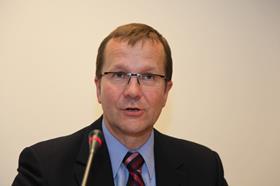
A major increase in world consumption of potatoes is expected in the longer-term, albeit mainly outside of Europe.
To benefit from these potential increased trade opportunities, trade body Copa-Cogeca has urged the EU Commission to ensure non-tariff barriers, red tape and phtyosanitary barriers are removed in upcoming trade negotiations with non-EU countries.
Speaking at a seminar held today (10 September) in Brussels, Belgium, Copa-Cogeca secretary-general Pekka Pesonen, said:“To maintain this stable and sustainable trend in the future, the European institutions must take the European potato sector seriously, and see it as an offensive sector in bilateral trade negotiations.
'Import tariffs and phytosanitary barriers must be removed. The intellectual property rights for seed potatoes must be protected, and promotion of fresh products strengthened both on the internal market, and also targeting non-EU countries.'
Held in conjunction with European Potato Processors' Association (Euppa) and the European Potato Trade Association (Europatat), the aim of the seminar was to highlight the importance of the EU potato sector, the fourth largest crop in Europe.
According to Copa-Cogeca, the association of European farmers and agri-cooperatives,the value of potato exports has risen 75 per cent in the past ten years, benefiting the EU economy, innovation and growth in EU rural areas.
Pesonen added: “The EU is a major potato producer and key trader, especially within the EU, even though the sector receives little support for promotion. The EU is the number one exporter of seeds to North Africa, of ware potatoes to Russia, and of processed goods to South America and Asia.
“The 2014/2015 marketing year is expected to be a bumper harvest, up 7 per cent on last year, to reach 27.5 million tonnes in the five main producer countries. On the spot market, prices are dropping and the situation is made worse by the trade restrictions recently imposed by the Russian Federation.
'The 2014/2015 marketing year is expected to be trickier than 2013/2014, also because the five main producer countries have seen an increase in surface area of 3 per cent compared to their five-year averages.'



